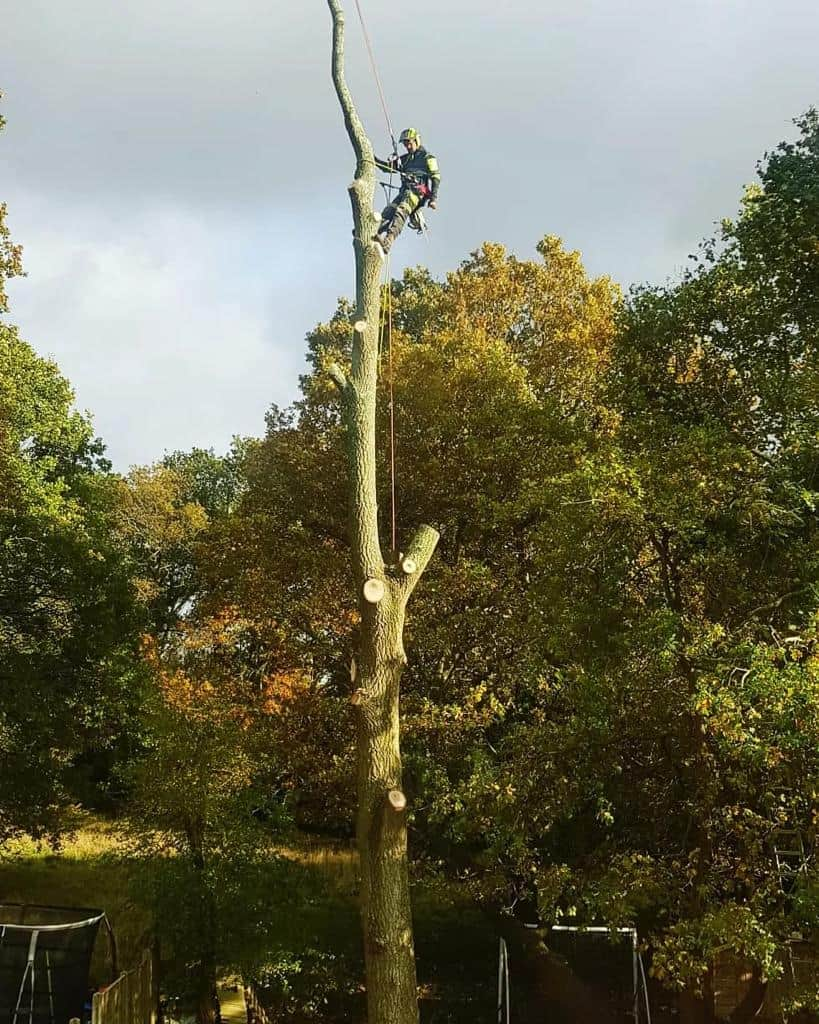Trees are vital components of our landscapes, offering beauty, shade, and a habitat for wildlife. However, they are also susceptible to various diseases that can compromise their health and the overall vitality of your garden. One of the most effective ways to manage tree health and prevent the spread of diseases is through strategic pruning. At EM Tree Surgery Quedgeley, we understand the importance of proper tree care and are here to guide you through the process of using pruning as a preventive measure against tree diseases.
1. Understanding Tree Diseases
Before delving into pruning techniques, it’s crucial to recognise common tree diseases that can affect your landscape. Diseases can stem from fungal infections, bacterial pathogens, or pests, and they often spread through contaminated tools, air, or soil. Common signs of tree disease include:
- Wilting or yellowing leaves
- Unusual growths or lesions on the bark
- Discolouration or leaf drop
- Visible pests or fungi on the tree
Recognising these signs early is essential for effective intervention.
2. The Role of Pruning in Disease Prevention
Pruning plays a pivotal role in maintaining tree health by removing diseased, damaged, or dead branches that can harbour pests and pathogens. Here are some key benefits of strategic pruning:
- Improved Air Circulation: Thinning out dense foliage allows for better airflow within the tree canopy. Improved air circulation helps reduce moisture accumulation, creating an environment that is less conducive to fungal infections.
- Enhanced Light Penetration: Pruning can increase light exposure to the inner and lower branches of the tree, promoting healthy growth and reducing stress on the tree. Well-lit trees are less likely to develop diseases.
- Targeted Disease Management: By removing infected branches and wood, you can halt the spread of diseases throughout the tree and into the surrounding landscape. This proactive approach is crucial for protecting other nearby plants.
3. When to Prune
Timing is essential when it comes to pruning. The best time to prune most trees is during their dormant season, typically late winter to early spring. During this period, trees are less stressed, and the risk of disease transmission is lower.
However, if you notice signs of disease during the growing season, it’s advisable to act promptly to prevent further spread. In such cases, consider the following:
- Avoid Pruning During Wet Conditions: Pruning when the tree is wet can increase the risk of spreading pathogens. If you need to prune during the growing season, ensure that the weather is dry.
- Focus on Affected Areas: When addressing diseased trees, prioritise removing affected branches first. This helps minimise the potential for spreading spores or pathogens.
4. Proper Pruning Techniques
Using correct pruning techniques is vital for the health of the tree. Here are some best practices to follow:
- Use Clean, Sharp Tools: Always ensure your pruning tools are clean and sharp to make precise cuts. Disinfect your tools between cuts to prevent cross-contamination. A solution of 10% bleach and water or isopropyl alcohol can be effective for this purpose.
- Make Clean Cuts: Cut branches at a slight angle, just above a node or lateral branch. Avoid tearing the bark, as this can create entry points for pathogens.
- Don’t Over-Prune: Excessive pruning can stress the tree, making it more susceptible to diseases. Aim to remove no more than 25% of a tree’s canopy in one session.
5. Monitoring Tree Health Post-Pruning
After pruning, it’s essential to monitor the tree’s health regularly. Look for any signs of disease or stress and be prepared to take further action if necessary. Additionally, ensure that the tree is receiving adequate care, including watering, mulching, and proper fertilisation.
Conclusion
Strategic pruning is an invaluable tool for preventing the spread of tree diseases and maintaining the overall health of your landscape. By understanding the signs of disease, employing proper pruning techniques, and monitoring your trees, you can protect your investment and ensure a vibrant outdoor space.
Call us on: 01452 941 558
Click here to find out more about EM Tree Surgery Quedgeley
Click here to complete our contact form and see how we can help with your trees needs.

